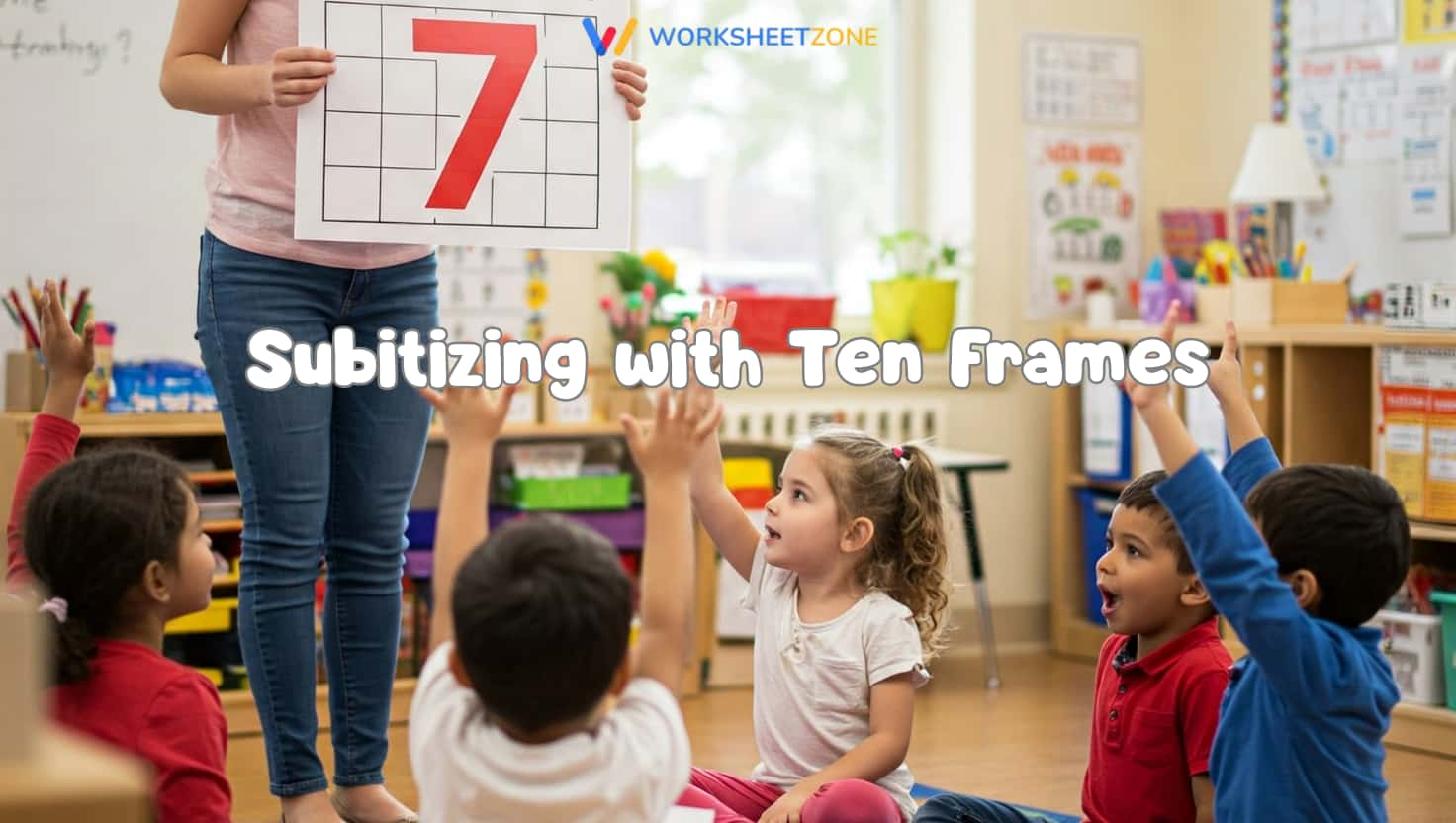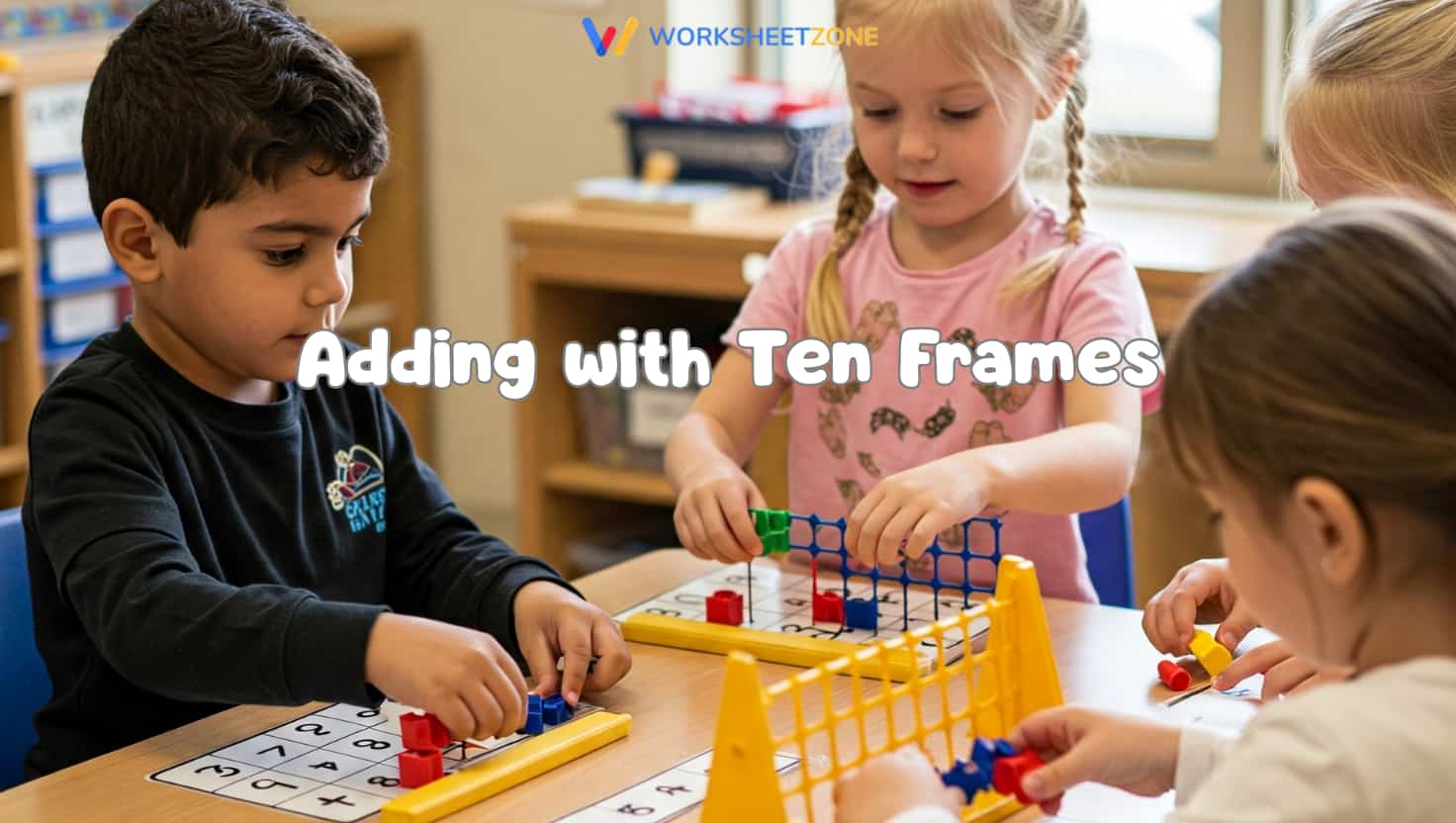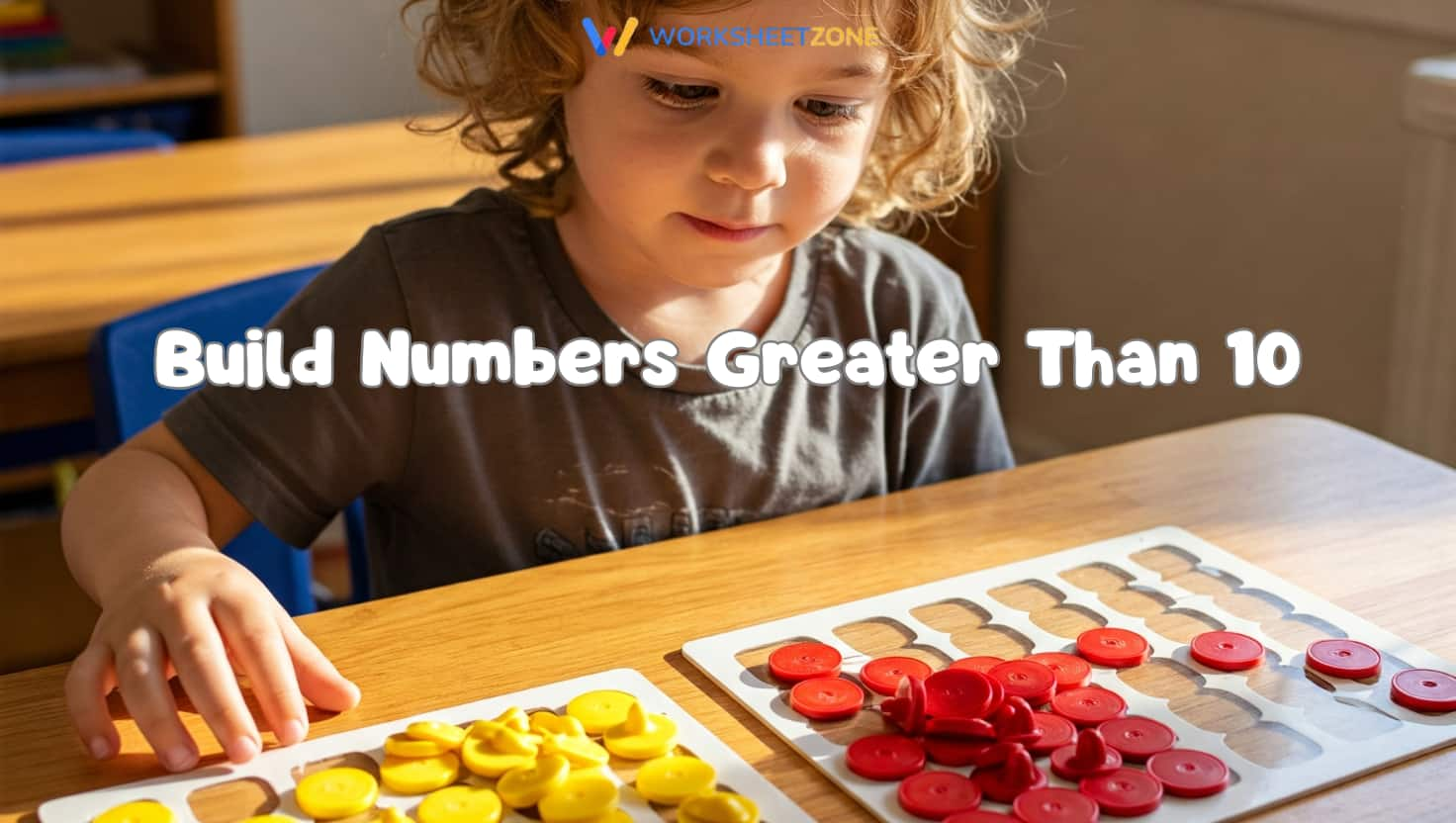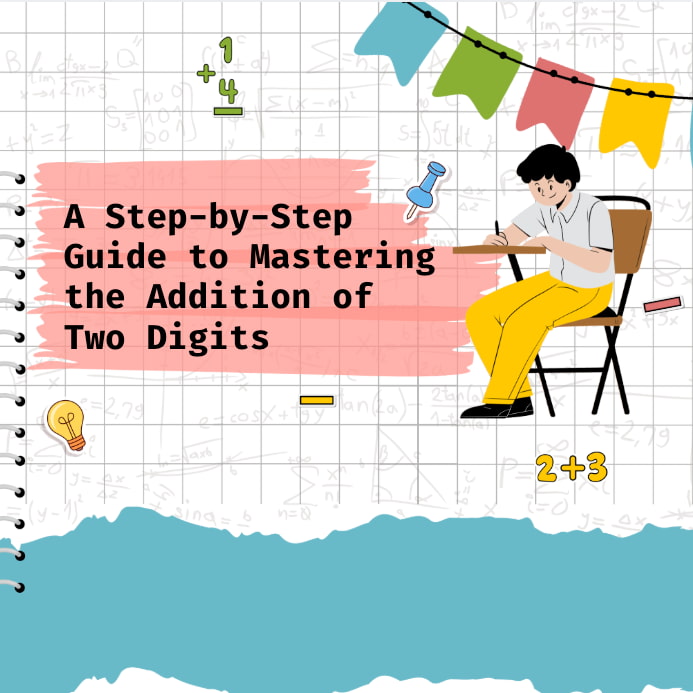Ten frame activities are incredibly simple yet powerful tools in early math education. They help young learners visualize numbers within the context of ten, building a foundational number sense that is crucial for understanding place value, addition, and subtraction.
Incorporating hands-on practice with ten frames makes abstract math concepts concrete and engaging for students. Discover exciting ways to use these tools to make math lessons dynamic and effective!
10+ Ten Frame Activities to Engage Students in Class
Below are multiple practical ten frame exercises for students designed to make early math concepts visible and fun:
1. Fill the Ten Frame
This core ten frame activity familiarizes students with the ten frame structure and builds counting skills up to ten. It creates a visual representation of numbers for subitizing and teaches the standard filling method.

Material needed:
- Ten frames (laminated cards, mats, or drawn)
- Counters or small manipulatives (beans, blocks, pom-poms)
How To Do:
- Introduce the ten frame, highlighting its 10 boxes in two rows of five.
- Explain and model the standard filling method: top row first (left to right), then the bottom row.
- Call out numbers (1-10) for students to represent by placing counters on their ten frames.
- Guide students, observing their counting and placement.
- Consistently ask about filled counters and empty spaces to reinforce number composition to ten (e.g., “You have 7 counters. How many empty spaces? So, 7 and 3 make 10.”).
- Offer practice with various numbers, ensuring the correct filing order is used.
2. Subitizing with Ten Frames
This activity uses ten frames to help students instantly recognize quantities (subitizing) without counting. Quickly seeing standard patterns, often using five as a benchmark, builds number fluency and supports mental math.

Material needed:
- Ten frame flashcards showing various numbers of dots (0-10, using standard configurations)
How To Do:
- Explain subitizing: knowing “how many” just by looking quickly.
- Show and emphasize the visual benchmarks for 5 (full top row) and 10 (full frame).
- Flash ten frame cards (0-5) quickly (1-2 seconds), having students say the number seen. Discuss how they knew without counting.
- Flash ten frame cards (6-10), encouraging students to use the ‘five’ benchmark (e.g., “I saw 5 and 3 more, that’s 8”). Have them verbalize their strategy.
- Increase speed and mix the order of cards as students become proficient.
- Add variation by flashing cards and asking for the number of empty spaces.
3. Making 10
Among foundational ten frame activities for understanding number bonds to ten, this practice provides a clear visual model for exploring pairs of numbers that combine to make exactly ten.
By showing filled and empty spaces, the frame provides a clear visual model for pairs that make ten, essential for mental math.

Material needed:
- Ten frames
- Two different colors of counters
How To Do:
- Introduce “Making 10” as finding pairs of numbers that fill the frame completely.
- Model placing counters of one color (e.g., 3 red) and asking how many more are needed to fill the frame (pointing to empty spaces).
- Add counters of the second color (e.g., 7 blue) to fill the frame and state the number bond (3 and 7 make 10). Write 3+7=10.
- Have students use their own frames to explore various starting numbers (0-10), finding the complementary number to make 10.
- Guide students to systematically explore all number bonds to 10, stating or writing the corresponding number sentence for each.
- Encourage recording number bonds found.
4. Adding with Ten Frames
This key ten frame activity uses the frame to visualize addition within ten. Representing addends with different colors helps students see parts combining to a whole (sum), building a concrete foundation for additional facts.

Material needed:
- Ten frames
- Two different colors of counters
- Addition problem cards (sums within 10)
How To Do:
- Introduce adding with ten frames as putting groups together.
- Model an addition problem (e.g., 4+3): place 4 counters of one color, then add 3 counters of the second color onto the same frame.
- Count the total counters to find the sum (7). State the number sentence (4+3=7).
- Have students use their frames to model other addition problems within 10, using two colors to represent the addends.
- Encourage using the ten frame structure to help add (e.g., seeing 6 and 3 more almost fills the bottom row).
- Provide problems for independent practice, encouraging students to explain their modeling.
5. Subtracting with Ten Frames
Subtracting with ten frames is among the most effective activities to help children develop number sense and understand subtraction within ten. Representing the starting number and removing the subtracted amount helps students visualize taking away, supporting part-whole understanding and fluency.

Material needed:
- Ten frames
- Counters (single color)
- Subtraction problem cards (starting number within 10)
How To Do:
- Introduce subtracting with ten frames as taking away or finding what’s left.
- Model a subtraction problem (e.g., 6−2): place 6 counters, then remove 2 counters from the frame.
- Count the remaining counters to find the difference (4). State the number sentence (6−2=4).
- Have students use their frames to model other subtraction problems within 10, starting with the total and removing the subtracted amount.
- Encourage discussing different ways to remove counters and connecting back to number bonds (e.g., “You took away 4 from 10, 6 are left, so 4 and 6 make 10”).
- Provide problems for independent practice, focusing on showing the action of taking away.
6. Build Numbers Greater Than 10
This key ten frame activity uses two frames to introduce numbers 10-20 and place value. By filling the first frame (ten) and adding ones to the second, students visualize numbers like 14 as a ten and ones, essential for regrouping.

Material needed:
- Two ten frames per student
- Counters
- Number cards or written numerals (10-20)
How To Do:
- Review that a full ten frame is 10. Introduce using a second frame for numbers >10.
- Explain the first frame holds the ‘ten’ (filled) and the second holds the ‘ones’ (extras).
- Model building a number (e.g., 13): Fill the first frame (10), then add 3 to the second.
- Connect the visual to the numeral (13 = one group of ten and three ones).
- Have students use two frames to build other numbers 10-20.
- Consistently use place value language (“how many tens, how many ones”).
- Provide practice representing numbers 10-20 and discussing their composition (e.g., 16 is 10 and 6 more).
7. Ten Frame Number Matching Game
Among engaging ten frame activities, this matching game reinforces number recognition (0-10) by linking the visual ten frame to its numeral. The playful format provides practice recognizing patterns and matching digits, building fluency and numeral association.

Material needed:
- Ten frame cards (quantities 0-10, standard filling)
- Numeral cards (0-10)
How To Do:
- Prepare sets of ten frame cards and matching numeral cards.
- Explain the goal: find pairs where the ten frame matches the numeral.
- Choose a game type (Basic Match face up, Memory Game face down, or Go Fish).
- Model gameplay clearly for students.
- Have students play in pairs or small groups.
- Circulate to support, listen for number identification, and encourage explaining matches (“This ten frame shows 6, and this card is the number 6!”).
- Review the connection between the ten frame pattern and the numeral.
8. Ten Frame Story Problems
This excellent ten frame activity helps students understand and solve addition/subtraction story problems. Using the frame to model quantities and actions makes abstract language concrete, building problem-solving skills.

Material needed:
- Ten frames (one or two)
- Counters
- Simple addition and subtraction story problems (within 10)
How To Do:
- Explain that ten frames can help solve math stories.
- Read a story problem aloud. Discuss the numbers, what’s happening, and the question asked.
- Model using the ten frame to show the story: place counters for the starting amount, then add or remove counters to show the action.
- Count the result in the frame to find the answer. Write the number sentence (4+3=7 or 9−2=7).
- Have students model new story problems on their own frames, guiding them step-by-step.
- Encourage students to explain how their ten frames showed the story and the answer.
- Provide problems for independent practice, focusing on modeling the problem accurately.
9. Ten Frame Hopscotch
Ten Frame Hopscotch is one of the most engaging activities that seamlessly combines math learning with physical exercise, making it both fun and educational for young learners.
Students move or place markers on squares to represent numbers or solve problems. This active approach makes learning dynamic and fun for kinesthetic learners.

Material needed:
- Sidewalk chalk (outdoor) or durable tape (indoor)
- Large floor space
- Beanbags, foam numbers, or large markers (“counters”)
How To Do:
- Draw a large ten frame grid on the floor or pavement, big enough for students to step in.
- Introduce the giant ten frame and standard filling method.
- Call out numbers (1-10) for students to represent by jumping or stepping into the squares, following the filling order. Say the number as they finish.
- Alternatively, have students throw or place markers (beanbags) into the squares from a line to represent numbers.
- Discuss the representation: filled squares, empty squares, top/bottom row counts.
- Add variations for simple addition/subtraction by having students model the actions on the giant frame.
10. Ten Frame Roll and Build
This fun, game-based ten frame activity uses dice to practice number recognition, counting, and representing numbers. Rolling the dice adds excitement and repetitive practice, reinforcing one-to-one correspondence and visualizing filling the frame.

Material needed:
- Ten frames
- Counters
- Dice (standard 6-sided, dot dice preferred)
How To Do:
- Explain the game: roll a die and build that number on your ten frame.
- Model rolling the die, identifying the number, counting out counters, and placing them correctly on the ten frame.
- Play the basic game: students take turns rolling and adding counters to their frame. The first to reach 10 exactly wins.
- Explore variations: Roll and Count On (start with a number, add roll), Partners Collaborate (share a frame), Roll and Subtract (start with 10, remove roll), Two Dice (for numbers 10-20, requires two frames).
- Ask questions during play to reinforce learning (e.g., “How many do you have now? How many more to make 10?”).
Why Are Ten Frames Essential for Early Math Success?
Ten frames are more than just a counting tool; they are foundational for developing robust number sense in young students. They make the benchmark of ten tangible and visually clear, which is crucial for understanding our number system.

Using ten frames helps students:
- Develop Subitizing: Instantly recognize quantities without counting, leveraging the standard ten frame patterns.
- Understand Number Bonds: Visually see the pairs of numbers that add up to ten (or other numbers) by observing filled and empty spaces.
- Model Operations: Clearly represent addition and subtraction within ten (and twenty), making the processes of combining and separating concrete.
- Introduce Place Value: Use two ten frames to visualize numbers 11-20 as a group of ten and some ones.
By providing a consistent, visual, and hands-on way to interact with numbers, ten frame activities build confidence and make early math concepts accessible to all learners.
Final thoughts
Incorporating ten frame activities into your math lessons is an effective strategy for developing strong number sense in young students. Ten frames provide a clear visual model for understanding numbers, counting, addition, subtraction, and the all-important concept of making ten.
These ideas offer varied, hands-on ways to use this versatile tool to make math engaging and build a solid foundation for future learning! Start using these ten frame ideas today!







